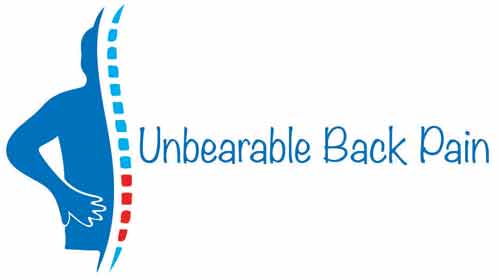Back pain is a common complaint among truck drivers. Spending hours behind the wheel, dealing with vibrations from the road, and handling heavy loads can take a toll on the spine. Recent studies show that a significant number of truck drivers experience chronic back issues.
The key reasons for back pain are often related to the nature of the job. Driving for long periods means sitting in a fixed position, which stresses the lower back. The lack of movement can lead to stiffness and discomfort. Additionally, the vibrations from the truck can further aggravate back problems.
Another contributing factor is poor posture. Many drivers tend to recline or sit incorrectly due to poorly designed seats or falling into bad habits over time. Lifting heavy items improperly also adds to the risk of injury.
Aside from the physical discomfort, back pain can have a serious impact on a driver’s overall well-being. When pain becomes chronic, it affects sleep, mood, and even job performance. It becomes hard to focus on the road, leading to dangerous situations.
Understanding these factors can help in taking steps to prevent and manage back pain effectively. This involves acknowledging the risks and making conscious efforts to adopt healthier work habits and routines.

Health Risks and Consequences of Untreated Back Pain
Ignoring back pain can lead to more severe health issues. What starts as a minor ache can easily escalate into chronic pain, affecting other parts of the body. Short-term issues include discomfort and stiffness, but over time, untreated back pain can lead to debilitating conditions.
One major risk is the development of chronic musculoskeletal disorders. These can seriously affect mobility and flexibility, making everyday tasks a struggle. Simple movements like bending or lifting can become painful, restricting a driver’s ability to perform their job efficiently.
Sleep problems are another consequence of untreated back pain. Constant discomfort can make it difficult to find a comfortable sleeping position, resulting in poor sleep quality. This lack of rest can lead to fatigue, impacting a driver’s alertness and reaction time on the road.
Mental health shouldn’t be overlooked either. Chronic pain is often linked to anxiety and depression. The persistent discomfort wears on mental well-being, leading to mood swings and feelings of frustration or helplessness.
Ignoring back pain also puts drivers at risk for more serious conditions like herniated discs or sciatica. These issues can cause severe pain and require extensive medical treatment, sometimes even surgery. Early intervention is key to preventing these complications.
Taking proactive steps to address back pain can prevent these long-term health risks. Seeking medical advice, using proper lifting techniques, and incorporating regular exercise can make a significant difference in a driver’s health and quality of life.
Effective Strategies for Prevention and Management
Ergonomics can be a lifesaver for truck drivers dealing with back pain. Adjusting the driver’s seat to ensure proper support is crucial. A well-designed seat reduces the strain on your spine. Investing in seat cushions or lumbar supports can provide additional comfort.
Stretching and exercise routines are essential. Simple stretches before, during, and after shifts can make a big difference. Focus on stretches that target the lower back, hamstrings, and hips. Incorporating these into your daily routine can help maintain flexibility and reduce muscle tension.
Regular exercise off the road is just as important. Strengthening the core muscles offers better support for the lower back. Activities like walking, swimming, and yoga are excellent choices. Even a short daily workout can enhance overall health and alleviate back pain.
Taking breaks while driving is another effective strategy. Sitting for extended periods without moving leads to stiffness. Schedule regular breaks to get out of the cab and move around. A short walk or simple stretches during these breaks can help keep the muscles flexible.
Maintaining proper posture is key. Ensure that the backrest supports the natural curve of the spine. Avoid slumping or leaning forward while driving. Adjust mirrors and the steering wheel to avoid unnecessary strain. A mindful approach to posture can prevent a lot of discomfort.
Resources and Support for Truck Drivers Suffering from Back Pain
Seeking medical help early can prevent many complications related to back pain. Regular visits to a healthcare professional, such as a chiropractor or a physical therapist, can provide insights into the specific causes of your discomfort and offer tailored treatment plans.
Support groups specifically for truck drivers can be immensely helpful. Sharing experiences with peers who understand the unique challenges of the job can provide both emotional support and practical advice. Many groups also offer resources on managing pain and improving overall health.
Accessing educational materials on back health is another valuable step. Many organizations and online platforms provide information on exercises, ergonomic tips, and health strategies tailored for truck drivers. Keeping informed can lead to better habits and pain management techniques.
Exploring insurance options is also important. Many health insurance plans offer coverage for treatments related to back pain, including chiropractic care and physical therapy. Checking your insurance benefits can help mitigate the costs of medical treatments.
Advocacy organizations often offer programs aimed at truck drivers’ health. These programs can include health screenings, training on ergonomic practices, and workshops focused on physical and mental well-being. Participating in such programs can enhance your overall health and help manage back pain effectively.
Final Thoughts
Long hours behind the wheel can take a serious toll on a truck driver’s back, but you don’t have to suffer in silence. By incorporating stretching exercises, improving posture, and using ergonomic support, you can reduce discomfort and protect your back health for the long haul.
For added relief, I recommend checking out this Elmara Lorry Driver Seat Cushion & Lumbar Support. It’s designed to provide essential back support and can make those long drives much more comfortable. Take care of your back—because a comfortable driver is a safer, happier driver!

Here’s a little transparency: Our website contains affiliate links. This means we may receive a small commission if you click and purchase. Don’t worry, there’s no extra cost to you. It’s a simple way you can support our mission to bring you quality back relief content.


I can totally relate to this! As a truck driver, I’ve often struggled with back pain after long hauls. The combination of endless hours behind the wheel and dealing with bumpy roads really does a number on the lower back. I’ve had to be very conscious about my posture and take regular breaks to stretch and walk around. It’s surprising how much difference even a short walk can make.
Poor posture and lifting techniques have added to my back pain over the years. I’ve recently started using a lumbar support cushion and it has eased my discomfort quite a bit. Also, investing in a good mattress for the sleeper cab has improved my sleep quality, which helps with overall pain management. How do you guys handle back pain during long trips? Any tips or tricks that work for you?
It’s great that you’re taking proactive steps to manage your back pain during long hauls as a truck driver! Long hours sitting, especially on bumpy roads, can certainly take a toll on your lower back. Using a lumbar support cushion and improving your sleep setup in the sleeper cab are excellent strategies, and it’s awesome to hear they’ve made a difference for you.
Here are a few more tips and tricks that might help you and other drivers manage back pain during long trips:
1. Maintain Proper Posture:
As you’ve mentioned, posture is key. Try to sit with your back fully supported by your seat and avoid slouching. Adjust your seat so your knees are slightly lower than your hips, and keep your feet flat on the floor or on a footrest if needed.
2. Frequent Breaks to Stretch:
Taking regular breaks to stretch is one of the most effective ways to prevent stiffness and pain. Even a quick 5-minute walk or gentle stretching every couple of hours can work wonders. Some stretches you can do:Hamstring Stretch: Stand and place one leg on a raised surface (like the step of your truck) and reach for your toes.Back Stretch: While standing, gently arch your back and lean slightly backward to stretch your lower spine.Neck and Shoulder Stretch: Roll your shoulders and stretch your neck from side to side to relieve tension.
3. Core Strengthening Exercises:
Strengthening your core muscles can help reduce back pain over time. You don’t need a gym—simple exercises like planks, bridges, and bird-dog (on hands and knees, extending one arm and opposite leg) can be done during breaks or even at home. These exercises help improve your posture and relieve pressure on your lower back.
4. Use Vibration Cushions or Seat Adjustments:
Long drives on bumpy roads can cause micro-vibrations that wear down your spine. Some drivers find relief with vibration-absorbing seat cushions or air suspension seats that reduce road impact. You can look for ergonomic seat cushions designed specifically for truckers.
5. Lifting Techniques:
If you’re lifting cargo, make sure to use proper techniques to avoid straining your back. Bend your knees, keep your back straight, and use your leg muscles to lift, not your back.
6. Hydration and Nutrition:
Staying hydrated helps keep your joints and muscles in good working condition. Make sure to drink plenty of water throughout the day. Additionally, maintaining a healthy diet that includes anti-inflammatory foods like leafy greens, berries, and fish rich in omega-3s can help manage chronic pain.
7. Sleep Ergonomics in the Sleeper Cab:
As you mentioned, a good mattress in your sleeper cab is critical for proper rest and recovery. Make sure your pillow supports your neck well and that you sleep in a position that maintains the natural curve of your spine, like on your back with a pillow under your knees or on your side with a pillow between your knees.
8. Heat and Cold Therapy:
After a long day on the road, using cold packs to reduce inflammation or heat therapy to relax tense muscles can provide some relief. Some truck drivers keep heat wraps or portable heating pads for their lower back, especially if they know they’ll be sitting for long periods.
9. Consult a Professional:
If the pain is chronic or worsening, it’s a good idea to consult a physical therapist or chiropractor. They can assess your posture, suggest exercises, and recommend specific interventions based on your needs.
10. Foot Support:
Wear comfortable shoes with good arch support. Some drivers even use footrests to change leg positions and improve circulation while driving.
By incorporating some of these strategies, you might be able to further reduce your discomfort and prevent back pain from becoming a bigger issue over time. If any of these methods work for you, or if you discover new tricks, it’d be great to hear about them!
Safe travels!
Michael